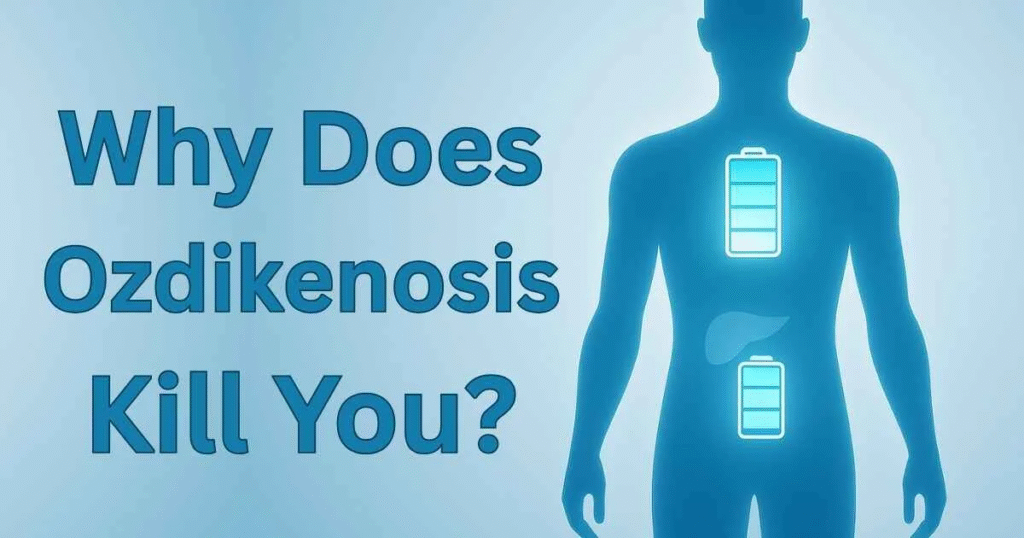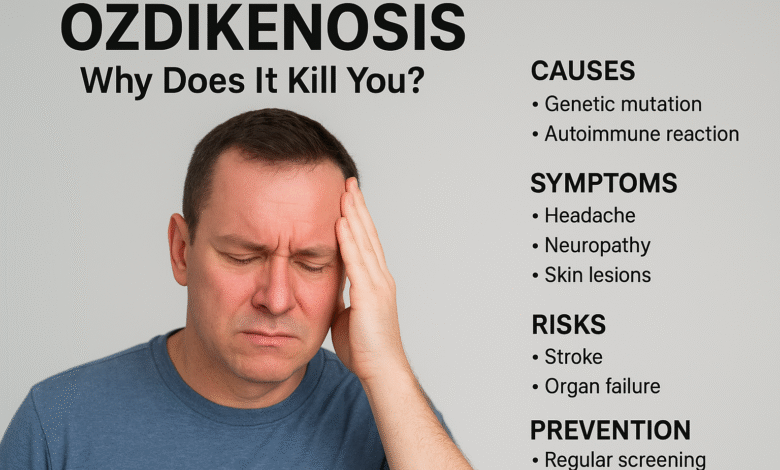What is Ozdikenosis?
Ozdikenosis is a rare and complex disease that has garnered attention in medical literature for its unique characteristics and implications. Classified as a systemic condition, ozdikenosis predominantly affects the connective tissues within the body, leading to a variety of symptoms that may be mistaken for other illnesses. Originating from the Greek terms ‘ozdi’ (meaning “to separate”) and ‘kenosis’ (meaning “to empty”), the name signifies the separation and degeneration of connective tissue structures.
The clinical presentation of ozdikenosis is diverse, with symptoms ranging from joint pain and stiffness to skin abnormalities and respiratory issues. Patients may experience a gradual onset of discomfort, which often escalates into more severe manifestations over time. These symptoms can significantly impair physical function and reduce the quality of life for those affected. The disease is known for its progressive nature, with individuals likely to encounter various stages. Early detection is critical, as the initial symptoms might be overlooked or attributed to less severe ailments.
The pathophysiology of ozdikenosis remains an area of ongoing research, though it is posited to involve an autoimmune component that disrupts normal tissue repair and regeneration processes. As the disease advances, many patients report additional complications, including cardiovascular strain and increased susceptibility to infections. This decline in overall health is a primary factor contributing to the question of why does ozdikenosis kill you. Understanding the underlying mechanisms of ozdikenosis allows for a deeper discussion on its evolution and the potential interventions available for managing its more hazardous effects.
The Pathophysiology Behind Ozdikenosis
Ozdikenosis is a complex condition characterized by a range of biological and physiological alterations within the body. This disorder primarily affects the cellular and systemic processes, leading to a cascade of detrimental effects across multiple organ systems. Understanding the pathophysiology of ozdikenosis is essential to comprehend why does ozdikenosis kill you, as the mechanisms involved reveal the severity of the condition.
At the cellular level, ozdikenosis triggers a series of inflammatory responses that can lead to tissue damage. These inflammatory processes activate immune cells that release cytokines, which, while necessary for defense, can exacerbate tissue injury when unchecked. The initiation of this immune response not only compromises local tissue health but also disseminates signals throughout the circulatory system, affecting wider physiological functions.
Furthermore, ozdikenosis has been linked to disruptions in metabolic pathways, particularly those involving oxidative stress. Increased levels of reactive oxygen species (ROS) can overwhelm the body’s antioxidant defenses, resulting in a state of oxidative damage. This imperils cellular integrity, leading to cell death and further augmenting the risk for systemic complications. Loss of cell viability and function manifests clinically as organ dysfunction, reflective of the underlying cellular demise.
The cardiovascular system is particularly vulnerable in the context of ozdikenosis. Damage to endothelial cells can precipitate vascular dysfunction, leading to hypertension, reduced organ perfusion, and, ultimately, heart failure. Equally concerning is the impact on neural pathways; the condition may induce neuroinflammation, which has been associated with cognitive decline and other neurological impairments.
In summary, the pathophysiology of ozdikenosis underscores the intricate web of biological processes that contribute to its severity. The condition poses significant risks, both locally and systemically, showcasing why does ozdikenosis kill you in diverse and impactful ways. Understanding these mechanisms is crucial for recognizing the importance of early diagnosis and intervention.
Risk Factors and Complications of Ozdikenosis

Ozdikenosis is a multifaceted condition influenced by a range of factors that can exacerbate its severity and ultimately contribute to a person’s risk of fatality. Understanding these risk factors is crucial to grasping why does ozdikenosis kill you and how to manage its complications effectively. One of the most notable aspects is genetic predisposition, where individuals with a family history of ozdikenosis or related disorders are at a significantly higher risk. Genetic markers can play a crucial role in determining an individual’s susceptibility to this condition, making awareness and early screening imperative.
In addition to genetic factors, environmental triggers are critical in the development of ozdikenosis. Exposure to certain pollutants, toxins, and infectious agents in one’s surroundings can heighten the risk of this condition manifesting. For example, prolonged exposure to industrial chemicals or airborne pollutants can lead to respiratory complications that correlate with ozdikenosis. Lifestyle choices, such as smoking, poor diet, and lack of physical activity, also contribute significantly. These habits can compromise the body’s immune system, making it more vulnerable to complications associated with ozdikenosis.
The complications arising from untreated ozdikenosis can be severe. As the condition progresses, it may lead to chronic respiratory issues, cardiovascular problems, or other systemic effects that dramatically increase mortality risk. Recognizing the signs and symptoms early can facilitate timely intervention and management, ultimately reducing the likelihood of these complications. Moreover, complications can compound existing health challenges, particularly in individuals with pre-existing conditions, thereby deepening the inquiry into why does ozdikenosis kill you. Addressing both the risk factors and potential complications is essential for creating a comprehensive approach to prevention and treatment.
Preventive Measures and Treatment Options
Ozdikenosis presents a complex challenge, but understanding preventive measures and treatment options can make a significant difference in managing the condition and reducing its associated risks, particularly regarding the underlying question of why does ozdikenosis kill you. Effective management is critical for individuals diagnosed with this medical condition, involving both lifestyle modifications and appropriate medical interventions.
Firstly, lifestyle changes play a foundational role in mitigating the risks of ozdikenosis. Individuals are encouraged to adopt a balanced diet rich in antioxidants, vitamins, and minerals that support immune function and overall health. Regular physical activity can also enhance cardiovascular health, contributing to the reduction of complications associated with ozdikenosis. Moreover, avoiding smoking and excessive alcohol consumption is essential, as these substances can exacerbate health issues and increase vulnerability.
In addition to personal health measures, consulting healthcare professionals for regular check-ups is vital. Medical practitioners may recommend screenings and monitoring strategies tailored to the individual’s health status. This proactive approach can help with early detection and intervention, potentially lessening the severity of symptoms before they escalate.
Treatment options for ozdikenosis may include pharmacological therapies aimed at managing symptoms and preventing complications. Anti-inflammatory medications and other pharmaceutical agents may be employed based on the severity of the condition and the individual’s overall health profile. Furthermore, ongoing research continues to explore innovative treatment options and techniques that could revolutionize care for those affected by ozdikenosis.
In summary, understanding the preventive measures and available treatment options for ozdikenosis can empower individuals diagnosed with this condition. By managing lifestyle factors and leveraging medical resources, it is possible to mitigate the dangers and effectively address the implications of why does ozdikenosis kill you.
